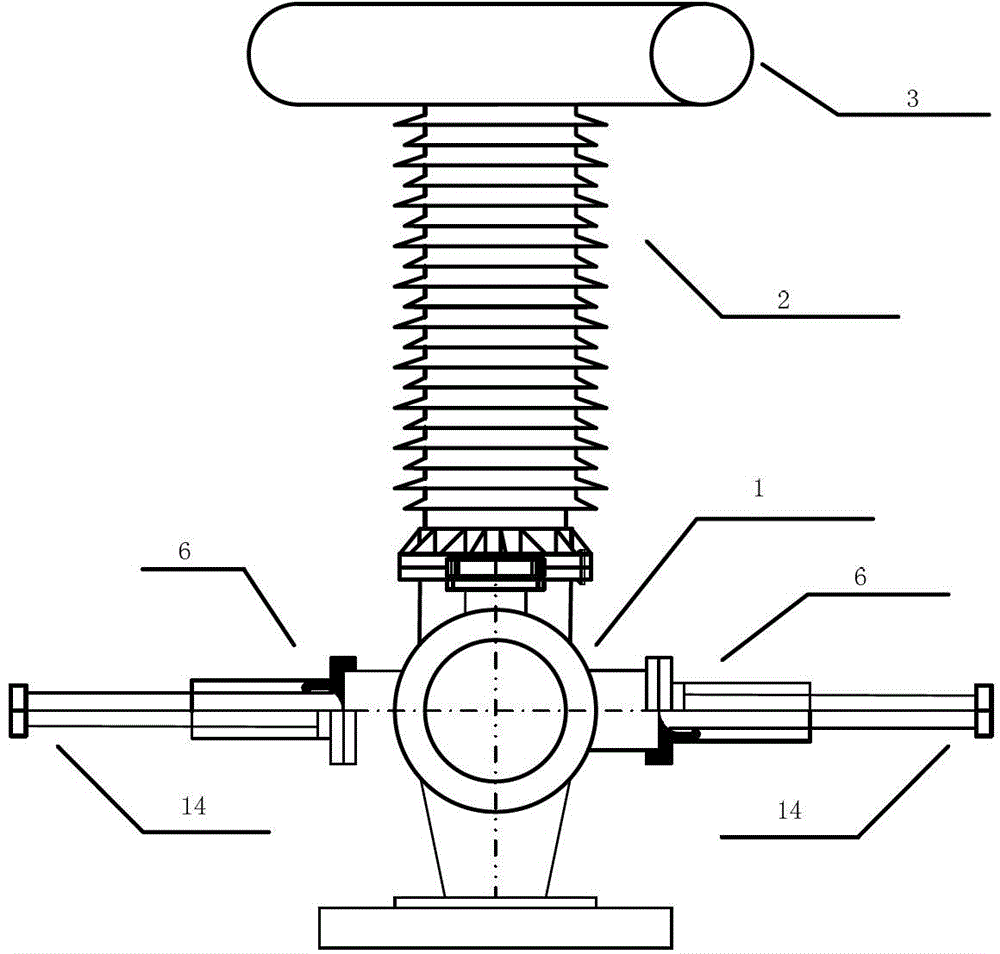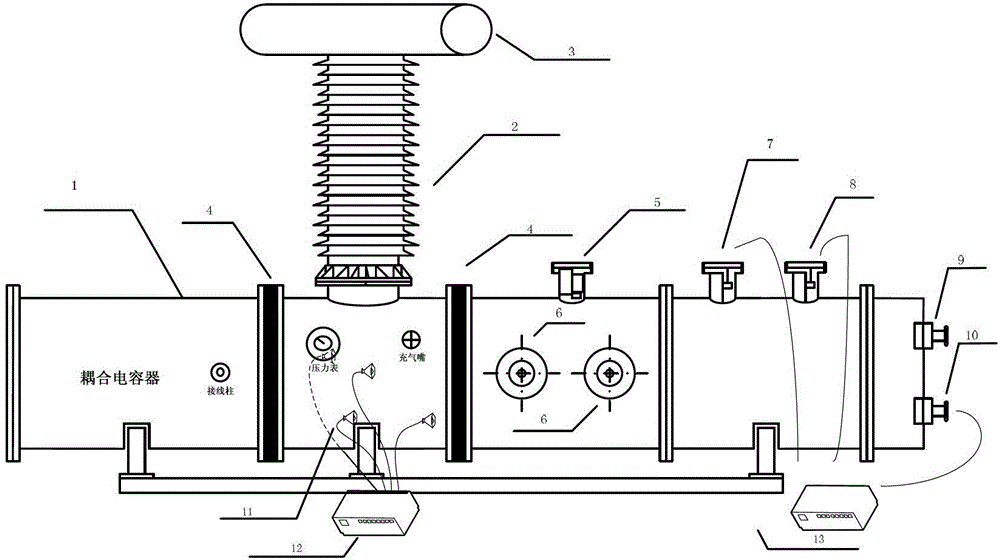Detecting system and method for partial discharge detecting sensor of GIS (gas insulated switchgear)
A combination of partial discharge detection and gas insulation technology, which is applied in the direction of instruments, measuring devices, and measuring electrical variables, can solve the problems of incomparable performance of GIS partial discharge detection systems and incomparable performance differences of ultrasonic sensors, achieving good results. The results are intuitive and accurate
- Summary
- Abstract
- Description
- Claims
- Application Information
AI Technical Summary
Problems solved by technology
Method used
Image
Examples
Embodiment Construction
[0050] The specific embodiments of the present invention will be further described in detail below in conjunction with the accompanying drawings.
[0051] Such as figure 1 as shown, figure 1 It is the front view of the GIS partial discharge ultrasonic and UHF sensor detection and verification system; in the figure, the GIS partial discharge ultrasonic and UHF sensor detection and verification system includes GIS tank, high voltage bushing, pressure equalizing ring, pot insulator, built-in camera, GIS Partial discharge model, standard UHF sensor, UHF sensor to be tested, ultrasonic signal injection port and UHF signal injection port.
[0052] The GIS tank is perpendicular to the high-voltage bushing and communicates with the lower end. The upper end of the high-voltage bushing is provided with a pressure equalizing ring. The GIS tank is symmetrically provided with basin insulators on both sides of the high-voltage bushing and on both sides of the standard UHF sensor and the UH...
PUM
 Login to View More
Login to View More Abstract
Description
Claims
Application Information
 Login to View More
Login to View More - R&D
- Intellectual Property
- Life Sciences
- Materials
- Tech Scout
- Unparalleled Data Quality
- Higher Quality Content
- 60% Fewer Hallucinations
Browse by: Latest US Patents, China's latest patents, Technical Efficacy Thesaurus, Application Domain, Technology Topic, Popular Technical Reports.
© 2025 PatSnap. All rights reserved.Legal|Privacy policy|Modern Slavery Act Transparency Statement|Sitemap|About US| Contact US: help@patsnap.com



